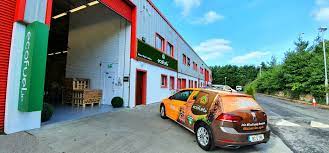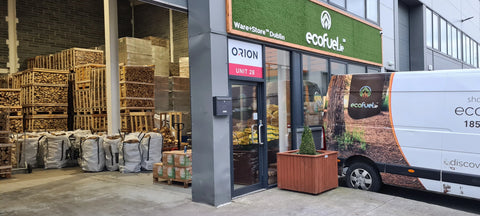We can eliminate plastic bottles from our waste stream by using refillable stainless bottles, but what about the damage we’ve already done? There are already five enormous gyres of floating plastic in the world’s oceans. The largest, The Great Pacific Garbage Patch covers 20 times the area of Ireland.
In 2015, the journal Science estimated that we dump between 4.8 and 12.7 million tonnes of plastic into the oceans every year. It’s not necessarily deliberate but, ultimately, we need to take responsibility for it.
Back in 2011, Boyan Slat was scuba diving in Greece… “I saw more plastic bags than fish around me. And I wondered, why can’t we just clean this up?”
It seemed crazy that nobody had even tried. Everybody else thought it was too complicated, but Boyan saw it as a challenge.
As part of a school project, Boyan began the see the challenges as solutions and started testing prototypes to collect the waste plastic from the ocean. He started tiny and was invited to speak at TEDx in 2012 to present his vision.
But progress was slow and by now, Boyan was studying Aerospace Engineering at Delft. But after 6 months, he dropped out of university and founded The Ocean Cleanup. He had just €300 to start.
In March 2013, fortunes changed. From The Ocean Cleanup…
“The TEDx video was picked up by several news sites, from which it spread to hundreds of thousands of people. The idea went viral. In a matter of days, it allowed The Ocean Cleanup to recruit an initial team, as well as raise the first USD 90,000 using crowdfunding. And so, The Ocean Cleanup project took off”. - The Ocean Cleanup
By 2018, “273 scale model tests, six at-sea prototypes, a comprehensive mapping of the Great Pacific Garbage Patch (GPGP) with 30 vessels and an aeroplane, and several technology iterations, we launched the world’s first cleanup system from San Francisco on September 8, 2018. During its approximate four months offshore, many aspects of the technology were proven, but it was observed that the system was not effectively retaining plastic.”
In October 2019, The Ocean Cleanup is using the natural currents of the ocean to effectively collect plastic debris from the Great Pacific Garbage Patch. System 001/B is a 600-metre curved floating tube that collects plastics from the top 3 metres of the ocean surface. It has already collected plastics of all sizes… form microplastics as small as 1mm, to giant abandoned ‘ghost’ fishing nets.

“After beginning this journey seven years ago, this first year of testing in the unforgivable environment of the high seas strongly indicates that our vision is attainable and that the beginning of our mission to rid the ocean of plastic garbage, which has accumulated for decades, is within our sights…
“Our team has remained steadfast in its determination to solve immense technical challenges to arrive at this point. Though we still have much more work to do, I am eternally grateful for the team’s commitment and dedication to the mission and look forward to continuing to the next phase of development.”
- Boyan Slat
The Ocean Cleanup plans to remove half the plastic from the Pacific Garbage Patch within 5 years.
There is cause for optimism. And everything we do matters. Reducing the plastic waste we put into the system matters, which means we need to reduce the amount we use. Removing it from the oceans matters. All of these actions collectively stack up to work together because it’s all part of the same system. We can do this.


